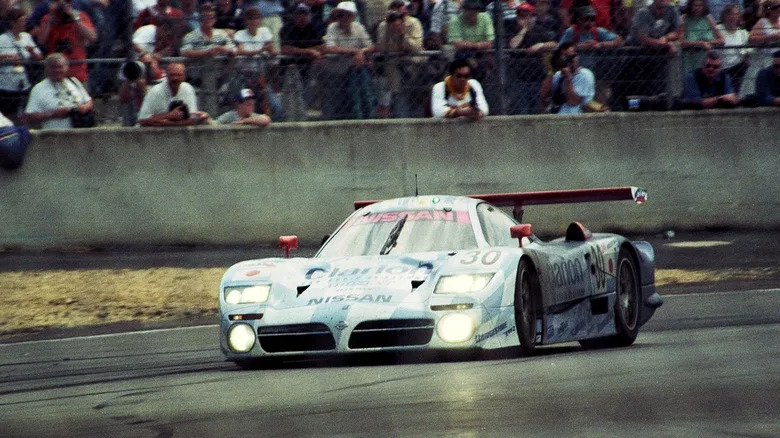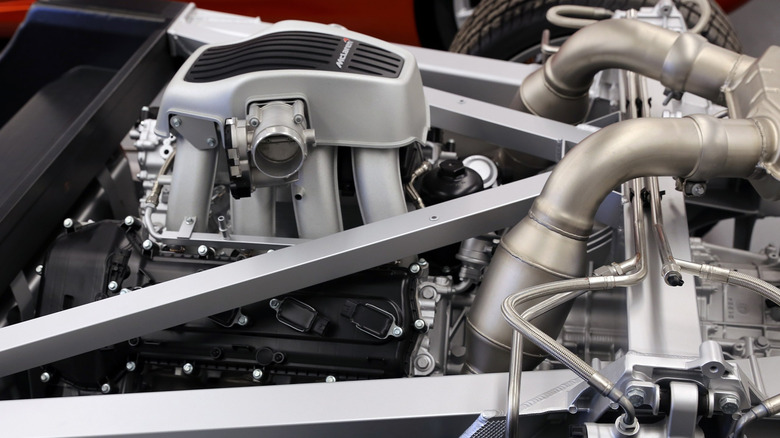McLaren makes some of the most advanced supercars in the world, with their carbon-fiber tubs, highly sophisticated suspension systems and mind-bending aerodynamic properties. However, the centerpiece of most McLarens — their twin-turbocharged V8 — is anything but new. In fact, they can trace their lineage back to a Nissan motor that came out nearly 40 years ago. Let me explain.
Right now, McLaren’s flagship motor is the M840T, which it developed jointly with Ricardo. It’s a 90-degree twin-turbocharged 4.0-liter V8 beast that can pump out anywhere from 604 to 822 horsepower, depending on the model (It even got an electric component in the Speedtail, but that’s neither here nor there). It first debuted back in 2017 with the 720S and has been used in all sorts of very cool McLarens like the Senna, Elva, GT, 750S and 765LT. While the M840T is undoubtedly very powerful, it’s not exactly a new engine.
It’s an evolution of the slightly smaller M838T, an engine McLaren produced with Ricardo from 2011 to 2021. In a lot of ways, this is the motor that put McLaren back on the map after not making a roadcar for over a decade. The twin-turbo 3.8-liter V8 debuted in the revolutionary-for-the-time MP4-12C with a strong 592 horsepower, putting it well above contemporary competition like the Ferrari 458 Italia and Lamborghini Gallardo LP 560-4. As is McLaren tradition, the automaker started cramming the motor into everything it made, so it found its way into the likes of the 650S, 675LT, 570S, 600LT and even the legendary P1 (thought it was given an electric motor to help it along).
Read more: Why Formula One Engines Went From V12s To V6s
It all starts with a Nissan
So, even just counting the time McLaren has been using this engine, it is — at least — 14 years old. Now, things get even wackier.
You see, McLaren didn’t just create this motor out of thin air — it had neither the money or the resources to do so as a nascent production car company. Because of that, it had to turn to an existing motor: the long-forgotten Nissan VRH35L. It’s a twin-turbo 3.5-liter aluminum V8 that was originally intended for endurance racing at Le Mans, and we’ve actually talked about it berfore, but it was during Trump’s first term, so that’s ancient history.
It was the final line of development of Nissan’s VRH35 architecture that debuted back in 1989. Nissan and Tom Walkinshaw Racing built the potent motor jointly for entry into the GT1 racing category in 1997 — placing in the middle of the bonkers Nissan R390 GT1 race car.
Early into the development of the MP4-12C, McLaren used the VRH35 for the basis of its engine program and bought the rights to it from TWR, according to a 2011 Car and Driver first drive. Of course, a lot has changed about the motor since those early days, but its lineage can be traced with a straight line back to 1980s Japan. Pretty neat.
Want more like this? Join the Jalopnik newsletter to get the latest auto news sent straight to your inbox, and add us as a preferred search source on Google.
Read the original article on Jalopnik.

